leads class action against Geico, alleging discriminatory practices
By Stacy M. Brown NNPA NewswireOn May 7 plaintiffs in a sizable class action lawsuit against insurance giant Geico joined prominent civil rights attorney Ben Crump at a press conference in the nation’s capital. The lawsuit, alleging contractual breaches regarding policy renewal commissions and accusations of unjust enrichment, represents a coalition of minority business owners formerly associated with the company.
At the heart of the allegations is the contention that Geico, a subsidiary of Berkshire Hathaway, systematically deprived minority Geico Field Representatives (GFRs) of critical business opportunities through what Crump termed as “unfair and unlawful” practices.
“It is important to note that Geico had quality reports that detailed Geico field representative’s metrics. These reports were downright discriminatory for the Hispanics, and Asians who worked for Geico,” Crump declared, noting that the names of the reports were themselves steeped in racial bias. “Geico, you are better than this.”
The news conference spotlighted several key

revelations:
1. Disproportionate Termination: In an unprecedented move in March 2023, Geico terminated agents across the United States, with a staggering 67 percent of those affected being minorities.
2. Exploitation of GFRs’ Labor: Plaintiffs assert that Geico reaped the rewards of GFRs’ hard work, retaining commissions generated from the business portfolios they painstakingly built. Moreover, Geico’s purported control over various aspects of GFRs’
operations allegedly left many questioning their professional futures post-termination.
3. Representative Testimonies: Present at the conference were four terminated GFRs, all from minority backgrounds:
Steve Ching, a Navy veteran of Asian descent, was the sole minority GFR in the Pacific Northwest, operating in Portland, Oregon.
Kim Dao, a Vietnamese woman, saw her Atlanta, Georgia, office shuttered while
those managed by white GFRs remained operational.
Denise Buckley, a Latina based in Houston, Texas, was the only Spanish-speaking agent in a region with a significant Latino population.
Kevin Ware, an African American with a decade-long tenure at Geico, managed the largest agency in the Midwest before its closure.
The lawsuit, initiated on Nov. 7, 2023, in the United States District Court for the District of Maryland, alleges a litany of legal violations, including breach of contract, unjust enrichment, and misclassification.
After Geico’s parent, Berkshire Hathaway’s, recent annual shareholder meeting on May 4, 2024, scrutiny has intensified on the conglomerate’s corporate governance. Crump and the plaintiffs have galvanized attention toward what they see as Geico’s discriminatory treatment of minority GFRs, igniting a national conversation on equity and accountability within the insurance industry.
This article was originally published by NNPA Newswire.
Mental Health Advocates Push for November Ballot Measure
OUR WEEKLY LOS ANGELES — “Today, we stand at a critical crossroads in our county’s history,” Yvonne Wheeler, president of the L.A. County Federation of Labor, said in a statement. “We have one of two options. Either we go about business as usual, or we can do something about it. Together, we can enact solutions to tackle the crisis head on, starting with the Affordable Housing, Homelessness Solutions and Prevention Now measure.”
ByWould repeal, replace Measure H

A
county voters in 2017 to create a dedicated stream of revenue to address homelessness. Measure H is expected to expire in 2027, unless renewed.
Backers say the new initiative, which would increase the sales tax to a half-cent, would be a game changer for the county and its approach to addressing the homelessness crisis. Proponents have said the measure would produce $1.2 billion annually.
The coalition–including more than 80 organizations such as the L.A. County Federation of Labor, California Community Foundation, United Way of Greater Los Angeles, Los Angeles/Orange Counties Building and Construction Trades Council, SEIU 721, among others–worked together to draft, qualify, and aim to pass a “bold and new” approach to housing affordability and homelessness, organizers said.
They aim to focus more funding generated by the halfcent sales tax to build more affordable housing, increase access to mental health and substance abuse treatment, and bolster accountability measures–including a legal requirement to deliver results.
The proposed ballot measure notes that 60% of the revenue would cover costs for homelessness services and 15% of that would be distributed to cities based on the annual pointin-time count. Another 35.75% would support the L.A. County Affordable Housing Solutions Agency, which was created last year by the state Legislature to
oversee homeless solutions.
Earlier Tuesday, hundreds of supporters rallied outside of the offices of the Los Angeles County Registrar-Recorder/ County Clerk’s office to submit the signatures. The county requires 238,922 valid signatures in order for the ballot measure to qualify.
“Today, we stand at a critical crossroads in our county’s history,” Yvonne Wheeler, president of the L.A. County Federation of Labor, said in a statement. “We have one of two options. Either we go about business as usual, or we can do something about it. Together, we can enact solutions to tackle the crisis head on, starting with the Affordable Housing, Homelessness Solutions and Prevention Now measure.”
Pete White, a representative of the Angeleno Project and executive director of the Los Angeles Community Action Network (LA CAN), said rent is “too damn high.” He highlighted that the proposed measure would uplift accountability with regular
Housing, Mental Health Advocates Push for November Ballot Measure...continued
reporting, annual audits and performance evaluations.
“This measure was written by experts,” Jessica Melendez, director of policy for T.R.U.S.T. South LA, a nonprofit, said in a statement. “Homelessness is the most extreme manifestation of poverty and community displacement. We won’t be able to address homelessness unless we do a much better job of helping keep those homes that folks already have.” She added, “We believe this measure goes much further than any previous attempt to do exactly that–prevent homelessness before it happens.” According to the coalition, the county is expected to verify signatures within 30 business days and decide whether the measure qualifies to be placed on the November ballot.
‘Take Me to the
Water’ is not being sung in Flint churches by Rev.
Dorothy Boulware
Residents of Flint, Michigan, still don’t drink the water.
They drink bottled water. They use filters to purify the water that flows from their faucets.
But after 10 full years, and much assurance from political leaders, they still don’t trust that the quality of their water — once so contaminated it was compared to an Environmental Protection Agency Superfund site — is now safe enough for their consumption.
Therefore, the churches of Flint still don’t regularly conduct baptisms. Not yet.
“For many years since the inception of the problem, we did not baptize at all,” says Bill R. Quarles, deacon at First Trinity Missionary Baptist Church in Flint. “We had one about eight months ago, but we still don’t baptize on a regular basis.”
It’s a stark departure from their faith, given the importance of baptism in religious ceremonies. But it also indicates the degree of trauma inflicted on the church by the Flint water crisis a decade ago, and a desire to keep congregants safe.
The problem, however, is much more than just the loss of the baptism ritual.
In 2014, Flint had a population of just under 99,000 people. By 2022, the most recent year U.S. Census Bureau data is available, only 79,854 residents remain in the city.
“Five Black churches have closed in the last three months,” says Rev. Derrick Aldridge, senior pastor of Second Chance Church. And due to the inability to easily cook with water, First Trinity still has no fellowship meals, which is a hardship in Baptist churches.
Roots of the crisis
On April 25, 2014, not long after officials switched the city’s water source from Lake Huron to the Flint River in a costsaving move, residents began to complain the water looked filthy, smelled foul, and tasted
of chemicals. Officials insisted the water was safe, but those who could afford it switched to bottled water.
Further testing, however, revealed that the water contained dangerous levels of bacteria and lead, leaching from the city’s aged, decrepit water system. The crisis became a national scandal: a majority-Black city with a 40.1 percent poverty rate became a high-profile example of environmental racism.
Then-Gov. Rick Snyder sent in the National Guard to distribute bottled water to poor residents while local, state, and federal government officials bickered about how to solve the problem, who was to blame — and who would pay for it.
As the crisis dragged on for many months, officials eventually agreed on a plan to overhaul Flint’s water system, gradually upgrading pipes, enhancing the filtration system and making the water safe for all. By then, however, residents had come down with mystery illnesses, strange rashes, and hair loss, and tests revealed children had alarmingly high levels of lead in their blood. While the water crisis disrupted everyday life, from doing dishes to learning loss in schools, not much attention was paid to how it affected the city’s faith community.
The toll on Black churches Quarles, of First Trinity Missionary Baptist, has been closely involved with the church for over 42 years. He says he has worked tirelessly to find solutions when people’s lives and health were threatened by unfit water.
Through their Flint Water Relief Mission, Alfred Street Baptist Church in Alexandria, Virginia, partnered with First Trinity for over two years, providing 20,000 cases of water to Flint residents. “They sent teams to work with us, and we’re
St. Mary’s History student researches one of San Antonio’s first
desegregated clubs

Peering through the historical keyhole by
Jayden MendezGrowing up on the West Side of San Antonio, Jadyn Evans has always been fascinated by historical events, both in her neighborhood and around San Antonio.
Her desire to learn about the past led her to St. Mary’s University, where the senior History major not only worked on research projects, but also got to share her discoveries about one of the city’s earliest desegregated nightclubs with others — even at official City of San Antonio events.
Little did she know that her studies would take her to familiar streets, finding one of the city’s earliest desegregated clubs that drew the community together during the era of Jim Crow.
Engaging others through History
During Black History Month, Evans was invited by the San Antonio Public Library to present her documentary, Peeping Through the Keyhole Club, at the Central Library, allowing her to show off a year’s worth of work.
“It’s really exciting to present this topic,” Evans said. “I love the community engagement that
my research involves, and it’s so fun to see how people can relate to each other with stories about the Keyhole Club.”
Open from the 1940s through the 1960s as a music venue, The Keyhole Club was run by musician Don Albert and was groundbreaking for being one of the first Black-owned clubs in San Antonio that allowed a desegregated crowd.
George M. Roper, then police commissioner, continuously tried to get the club shut down for this reason, temporarily succeeding.
The issue became a civil rights battle, ending with a victory for Albert and the club after the case, Roper v. Winner, was decided in the 37th District Court of San Antonio in 1951.
The building is still standing today on West Poplar Street but is no longer a hotspot for jazz. It’s instead used as a venue for community events.
Finding personal significance
Evans, who identifies as Black and Hispanic, said her research held personal and historical significance, as the ruling came three years before what many consider the start of the Civil

Rights Movement.
“I grew up on the West Side where there aren’t a lot of people who looked like me,” she said.
“So, it’s interesting to see two different cultures mixing together to create this community, enjoying their lives, having fun and getting to listen to blues music.”
Working as a research assistant for Professor of History Teresa Van Hoy, Ph.D., Evans was assigned the project, originally funded by the Black in the Barrio Project run by Gerald E. Poyo, Ph.D., St. Mary’s Professor of History and O’Connor Chair for the History of Hispanic Texas and the Southwest.
“I grew up on the West Side where there aren’t a lot of people who looked like me. So, it’s interesting to see two different cultures mixing together to create this community, enjoying their lives, having fun and getting to listen to blues music.”
The project resonated with many from San Antonio and nationwide, including getting featured by KSAT. Van Hoy said someone from California saw the story and called to share his own
experiences of the club.
“One of the messages is for students to believe in themselves as scholars,” Van Hoy said. “Do your research with all your strengths and talents and go beyond assignments and imagining that it’s becoming part of your portfolio.”
Evans is not the only student who has garnered this much attention for a project. Students in the past have gone above and beyond in their research, earning them internships, recognition and scholarships. Tori Mejia (B.A. ’23), who also worked with Van Hoy, turned her project on enslaved people during the Civil War into a summer internship in Maryland.
Van Hoy said she strives to inspire students to enjoy what they are researching because this urges them to continue their research, as it leads to bigger opportunities.
“I would love to continue research on the Keyhole Club and other places of integration in the San Antonio community that not many people know about,” Evans said.
Teacher Appreciation Week Kicks Off With New UNCF Study Finding Black Parents and Caregivers Report Better Outcomes When There are More Black Teachers at School
Black parents and caregivers report higher college aspirations for their child and fewer school suspensions when there are more Black teachers at their child’s school compared to schools with few or no Black teachers
WASHINGTON, DC (May 7, 2024)—As the country celebrates Teacher Appreciation Week, UNCF (United Negro College Fund) released a groundbreaking study that provides invaluable insights into the perspectives of African American parents on key issues in education and highlights the importance of Black teachers to Black families.
The report, titled "Hear Us, Believe Us: Centering African American Parent Voices in K-12 Education” offers a comprehensive analysis of the experiences, challenges and aspirations of African American parents in relation to race, college readiness, parental engagement and more.
Among the findings, more than 90% of Black parents surveyed said they want more opportunities to be involved in their children’s education and more input into education laws. UNCF conducted focus groups and implemented a national survey of 500 low- to moderate-income Black parents. Additionally, a subset of 1,200 Black parents were surveyed in Chicago, Indianapolis, Atlanta, Houston, Memphis and New Orleans to assess some city-level trends.
During this Teacher Appreciation Week, UNCF seeks to underscore the significant, positive influence that Black
teachers have on students, families and communities.
“Across several indicators in the study, Black parents reported better experiences when their child attended schools with more Black teachers. While the research abounds on the positive effects of Black teachers on students, this report emphasizes the parent voice in this important scholarship. This report substantiates what we have known for decades: Black teachers matter,” said Dr. Anderson.
The report, based on extensive national quantitative research and focus groups highlights the crucial role that African American parents play in their children's education. It underscores the importance of understanding their unique perspectives and incorporating them into education policies and practices.
Key findings from the report include:
Black parents report higher college aspirations for their child and lower instances of school suspensions when there are more Black teachers at their child’s school.
For Black parents and caregivers whose children attended schools where many or most teachers were Black, the probability that their child
received exclusionary discipline is almost three times lower than when their child attended schools with fewer Black teachers.
Black parents also felt more respected at school when their child attended schools with more Black teachers.
Black parents greatly value higher education and are deeply engaged and invested in their child’s education.
84% of Black parents believe it is important for their child to attend and graduate college and over 80% check their child’s homework and speak to their child’s teacher on a regular basis. 93% of Black parents say they want more opportunities to be involved in their child’s education and input into education laws.
3. Black parents want to see more Black leaders in education.
70% of African American parents and caregivers believe the involvement of African American leaders and organizations will make school improvement efforts more effective.
4. School safety is a key concern for Black parents and caregivers.
80 % of African American parents and caregivers rank safety as the most important
Teacher Appreciation Week Kicks Off With New UNCF Study Finding Black Parents and Caregivers Report Better Outcomes When There are More Black Teachers at School ..continued
organizations to provide resources and services for families.
- Value and prioritize support staff in school budgets.
- Prioritize student safety.
Recommendations for Higher Education
- Make intentional efforts to expose students and families to college opportunities.
- Create intentional pipelines with districts and charter management organizations for increasing educator diversity.
- Ensure teacher training
programs include anti-racist, culturally relevant teaching practices.
- Partner with K-12 schools and districts to provide financial and literacy to students and families.
UNCF is committed to utilizing the findings of this report to drive positive change in education. Through its programs, scholarships and advocacy efforts, UNCF will continue to work towards a future where every African American student has access to a quality education that prepares them for success.
factor for school selection.
“What we have known at UNCF for decades is that Black parents are deeply engaged in the educational lives of their children, yet far too often they are denigrated and deemed disengaged about their children’s learning environment,” said Dr. Meredith Anderson, director, K-12 Research, UNCF, and author of the report. “Black parents are concerned about opportunity gaps and want better resources for their children. They want to see more Black education leaders and organizations in education; and they want more opportunities to be involved and have their voices heard.
The report concludes with a series of recommendations aimed at addressing the concerns and aspirations of African American parents. These recommendations include a call to action:
Recommendations for the K-12 Sector
- Invest unapologetically in Black teachers.
- Create more intentional opportunities for parent involvement.
- Create a learning environment that reflects African American history and culture.
- Partner with local
SAN BERNARDINO, CA -
The San Bernardino City Unified School District (SBCUSD) announced the approval of a ground lease agreement with the San Bernardino County Fire Protection District (SBCFPD) to facilitate the construction of a new fire station intended to serve the Wildwood Park neighborhood and surrounding areas of the City of San Bernardino. This strategic collaboration will see County Fire leasing approximately one acre on the southern portion of the Arrowhead Elementary School property to facilitate the building of a new fire station 227. The lease includes provisions for a long-term commitment that could extend up to 99 years, reflecting a significant investment in community safety and infrastructure.
The new fire station will enhance emergency response capabilities in the City of San Bernardino, offering immediate fire protection services directly adjacent to the school site.
Supervisor Joe Baca, Jr. added, "With the City of San Bernardino having one of the highest call volumes in the country, this fire station is a necessary expansion of our capacity to ensure swift, efficient emergency responses. It will significantly bolster our preparedness and ability to protect our community and the surrounding areas, particularly those most vulnerable."
The modernized, energyefficient facility is set to replace the community's existing station, located at 282 W 40th Street, which has proudly operated since 1953. The new station will include additional apparatus space and accommodate additional personnel to meet the fire, rescue and EMS needs for decades to come.
This proximity to the school and residential areas ensures that the fire station is a visible, integral part of the community it aims to protect, further enhancing the safety net for the residents of the City of San Bernardino. "We are incredibly thankful to the San Bernardino City Unified School District for their partnership and commitment to public safety," said San Bernardino County Fire Chief Dan Munsey. "Their collaboration on building this new fire station is foundational to our efforts to improve fire protection services, decrease response times and better serve the community of San Bernardino.”
The construction and operational details of the fire station will adhere to the highest standards of safety and efficiency, ensuring a state-of-the-art facility that meets the growing needs of the City of San Bernardino. For more information about the San Bernardino County Fire Protection District and its services, please visit sbcfire.org. About San Bernardino County Fire:
The San Bernardino County Fire Protection District is an all-risk/full-service fire district committed to providing the highest level of service in the most efficient and cost-effective manner. San Bernardino County Fire provides premier Fire, Rescue and EMS Services for over 60 communities, from rural towns to major cities, and all the unincorporated areas of the county.
"Supervisor Baca has always been a big supporter of our schools here in San Bernardino City Unified and this new agreement with San Bernardino County Fire would not have been possible without his efforts. We are excited about the positive impact this will have on the community of San Bernardino and the staff and students at Arrowhead Elementary School,” said Superintendent Mauricio Arellano. “This partnership is in direct alignment with the District's recently Boardadopted Vision 2030: SBCUSD SHINES initiative, where student success is bolstered through collaborations. Great things are happening ‘right here’ in San Bernardino.”
Gov. Newsom Presents Balanced Budget for California; Avoids Tax Hikes, Worker Furloughs
Joe W. Bowers | California Black Media
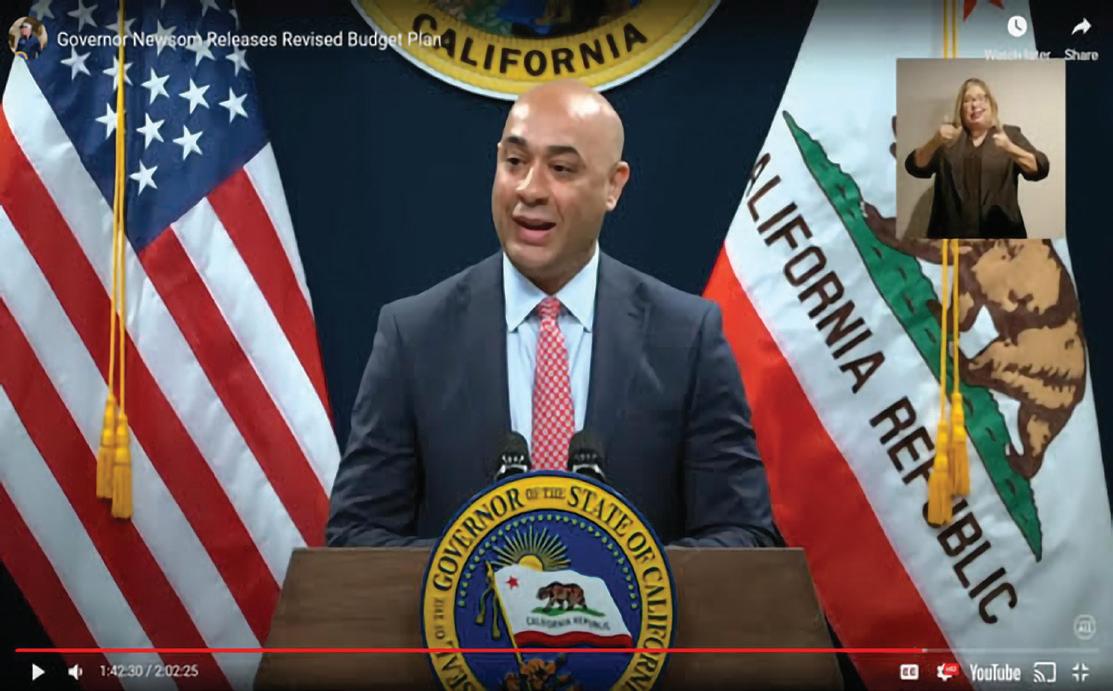
On May 10, Gov. Gavin Newsom presented his annual revision of the state budget for the 2024-25 fiscal year.
Commonly referred to as the “May Revise,” the $288 billion spending plan focuses on stringent spending cuts, improving government efficiency, streamlining procurement, cutting bureaucratic obstacles, and reducing redundancies rather than resorting to tax increases or implementing worker furloughs.
“Without raising taxes on Californians, we’re delivering a balanced budget over two years that continues the progress we’ve fought so hard to achieve, from getting folks off the streets to addressing the climate crisis to keeping our communities safe.” Newsom stated.
Highlights of the proposed budget include:
Achieving Fiscal Stability Over Two Years
The budget tackles deficits for both the current budget year and the next, eliminating a projected $27.6 billion deficit for the 2024-25 fiscal year and a projected shortfall of $28.4 billion deficit for the next fiscal year. By tackling these budget shortfalls now, Newsom aims to achieve a positive operating reserve balance over the next two fiscal years.
Streamlining Spending and Enhancing Efficiency
To address the budget deficit, Newsom’s budget cuts one-time spending by $19.1 billion and ongoing spending by $13.7 billion through 2025-26. These cuts involve various measures, such as slashing $260 million from the Homeless Housing, Assistance and Prevention program (HHAP), reducing operations costs by 7.95% across nearly all state departments, eliminating 10,000 vacant state positions, and
scaling back funding for certain programs, including education initiatives like the MiddleClass Scholarship program and childcare expansion projects.
Newsom is proposing $3.6 billion less for climate change initiatives and plans to decrease funding for expanding internet access to underserved areas by $2 billion over two years. Additionally, funding cuts are proposed for programs addressing shortages in healthcare workers such as nurses and social workers, while healthcare providers serving Medi-Cal patients will lose extra pay incentives.
Newsom's plan involves revisiting Proposition (Prop) 98, a constitutional provision that guarantees a minimum level of funding for California's schools and community colleges. By adjusting the funding requirement for the fiscal year 2022-2023 to reflect lower-than-anticipated state revenues from the previous year, Newsom aims to align education funding with current financial realities. However, this move could potentially lead to significant cuts in future school funding, raising concerns among education advocates.
Safeguarding Vital Services and Social Safety Nets
Despite facing budget cuts, many public assistance programs, such as those providing food, healthcare, and educational services like pre-kindergarten for 4-year-olds, will maintain their current levels of support. Efforts to achieve this involve pausing expansion of some programs and reducing new investments, all while prioritizing fiscal responsibility alongside meeting the essential needs of residents, which includes keeping the promise to extend Medi-Cal coverage to undocumented immigrants.
Maintaining Fiscal Stability Without Tax Increases
The budget emphasizes fiscal stability without resorting to tax increases. Instead, it seeks to enhance government efficiency and reduce spending redundancies. Additionally, the plan minimizes reliance on the state's "Rainy Day" reserves, preserving these funds for future emergencies.
Senate President pro Tempore Mike McGuire (D-North Coast) and Senate Budget and Fiscal Review Committee Chair Sen. Scott Wiener (D-San Francisco) commended the collaborative efforts between the Legislature and the Governor to balance the budget, highlighting the $17 billion reduction in the projected deficit achieved through their Early Action Agreement.
Speaker of the Assembly Robert Rivas (D-Salinas) and Assembly Budget Committee Chair Jesse Gabriel (D-Encino) acknowledged the improved budget forecast and the preservation of rainy-day reserves, but expressed concern over proposed cuts, pledging to protect crucial programs for vulnerable Californians and classroom funding.
Assembly Republican Leader James Gallagher (R-Yuba City) said Newsom’s spending plan is “wasteful and irresponsible.”
“Newsom made big promises he can’t possibly keep while wasting billions on homelessness programs that don’t work and a high-speed train to nowhere. Now he’s forced to make cuts to programs Californians rely on,” said Gallagher said in a statement. “Newsom played fast and loose with our money and now the game is up.”
California School Board Association (CSBA) President Albert Gonzalez criticized Newsom's budget plans, citing potential unconstitutional

“One where we can replace gas-guzzling cars on our roads with EVs that run on clean electricity and emit less pollutants,” she added.
Although the fixed charge is supposed to lower the utility bill for residents, opponents of the charge argue that a flat rate increases the monthly bill for middle and high-income households.
California currently operates under a prepaid model and maintenance of the power grid is included in the overall usage rate. But with this new proposal, residents will pay more than double the national average of $11 for electricity.
Cynthia Martinez, a spokesperson for the Predictable Power Coalition, an advocacy group, argued that a flat rate is more equitable and will reduce the cost of utilities for struggling families.
“For people who live in
Expect to See a New Flat Rate Fee of $24 on Your Electricity Bill...continued
According to a press release dated May 8, State education officials have appropriated funds since 2021 to offer students and their families resources such as h
The State’s board awarded $1.3 billion to 288 local education agencies that fund and support 995 schools statewide.
The California Department of Education plans to mobilize resources to help students thrive in school and at home. This initiative includes summer programs, tutoring, and counseling.
Gov. Newsom said that the state is expanding community schools across the state. Students will be offered free meals twice a day, mental health counseling, and after-school programs.
manipulation of Prop 98 funds. He warned against diverting $8.8 billion meant for schools to noneducation spending and stressed the need to protect Prop 98.
“To serve California students, we must preserve Prop 98, avoid new pet projects, remain focused on the effective implementation of existing programs, identify resources to address staffing shortages and stop the growth of unfunded mandates that negatively impact existing initiatives and reduce local control,” Gonzalez said.
During the presentation, Joe Stephenshaw, the state Director of Finance, emphasized to the media that, “We tried to focus on protecting the core programs and services that people rely on, but even in doing that, tough decisions had to be made.” He further stressed, “The budget is about solutions to not only solve for a year, but the subsequent budget year.”
In response to the Governor’s presentation, California State Controller Malia M. Cohen said the state exceeded its revenue target by nearly $150 million in April, but year-todate revenues remain at levels “lower-than-expected. However, Cohen affirmed that the state has “unused borrowable resources” that can be utilized to balance the budget.
“The high level of borrowable resources is due in large part to the $26 billion the state has prudently built up and reserved for rainy days and economic uncertainties. Maintaining enough cash to cushion against economic downturns has been one of California’s strengths in its credit ratings, and this ensures the state will continue to meet its payment obligations.”
The state Constitution requires state lawmakers to approve the state budget by June 15. Newsom then has until July 1 to finalize the spending plan with the Legislature.
“California is transforming education to make schools a place where every family and student can succeed,” Newsom said.
The state is developing the initiative as part of the California Community Schools Partnership Program (CCSPP), a ten-year plan that promotes equity and quality education for students in California. The state will spend $4.1 billion with its partners including community schools, local counties, government
agencies, and nonprofits that provide health, mental health, and social services.
State Board of Education President Linda DarlingHammond is eager to uplift communities with well-resourced schools and achieve equity in public education.
“We know children learn best when they are healthy, happy, and in a learning environment where they are surrounded by knowledgeable and caring adults attuned to their needs,” DarlingHammond said.
State Superintendent of Public Instruction Tony Thurmond endorsed current school programs and anticipates promising results as grants are invested in these programs.
“Our Community Schools continue to serve as exemplars of programs that educate the whole child. I am proud to see California continue to be at the forefront of recognizing that student wellness is a cornerstone of learning,” Thurmond said. The California Department of Education will award a final round of grants to communitybased organizations and schools during the 2024-2025 academic year.

Padilla, Durbin, Gillibrand Lead Call to Provide At Least $3 Billion for Shelter and Services Program in FY 25
WASHINGTON, D.C. —
Today, U.S. Senators Alex Padilla (D-Calif.), Chair of the Senate Judiciary Subcommittee on Immigration, Citizenship, and Border Safety, Majority Whip Dick Durbin (D-Ill.), Chair of the Senate Judiciary Committee, and Kirsten Gillibrand (D-N.Y.) led 15 Senators in calling on Senate Appropriations Committee leadership to provide no less than $3 billion in FY 2025 funding for the Federal Emergency Management Agency’s (FEMA) Shelter and Services Program (SSP) for humanitarian assistance funding. SSP funding supports state, local, and nonprofit service providers who assist the federal government by providing critical services for asylum seekers released from government custody to continue their immigration cases.
hotter climates, who really have no choice but to run their air conditioning more often, they’re paying higher costs that go toward grid upkeep,” Martinez said.
In the past, Democrats stalled plans at the state Capitol to approve the flat fee. All 14 Democrats in the Senate Energy, Utilities, and Communications Committee abstained from voting during a hearing on the proposal to roll back the flat rate.
California Approves $1.3 Billion to Restructure Community Schools
The State Board of Education and Governor Gavin Newsom announced last week that they have approved $1.3 billion in grants to implement a new school initiative that offers students support outside the classroom.
The Senators also urged appropriators to include language that would help increase transparency and fairness while making the program more accessible to new recipients who assist asylees, but who were not previously eligible to receive allocations under the program or its predecessor, the FEMA Emergency Food and Shelter-Humanitarian (EFSP-H) program. Additionally, the Senators asked appropriators to direct FEMA to publicly release its allocation methodology and work closely with SSP recipients to ensure that SSP funding is received in a timely manner.
“In light of federal capacity constraints, the federal government relies on local nonprofit and governmental social service organizations, as well as states and localities, to provide shelter, food, transportation, and support services to asylum seekers arriving at our southern
border,” wrote the Senators. “Communities and organizations are on the frontlines of assisting migrants, and resources are being stretched thin as these entities perform federal government functions. This funding remains vitally important as more cities in the United States receive asylum seekers and other vulnerable migrants.”
“Given that the federal government has asked states, localities, and nonprofits to perform an essential governmental function, Congress must reaffirm its commitment to these states, localities, and nonprofits by providing significant funding for SSP and by working to ensure that funds are allocated and disbursed to recipients in a transparent and timely manner,” continued the Senators.
In addition to Padilla, Durbin, and Gillibrand, the letter is also signed by Senators Richard Blumenthal (D-Conn.), Cory Booker (D-N.J.), Laphonza Butler (D-Calif.), Tammy Duckworth (D-Ill.), Martin Heinrich (D-N.M.), Mazie Hirono (D-Hawaii), Mark Kelly (D-Ariz.), Angus S. King, Jr. (I-Maine), Ben Ray Luján (D-N.M.), Edward J. Markey (D-Mass.), Bernie Sanders (IVt.), Kyrsten Sinema (I-Ariz.), Elizabeth Warren (D-Mass.), Peter Welch (D-Vt.), and Ron Wyden (D-Ore.).
Senator Padilla has been a strong advocate for securing funding for the SSP and EFSP-H programs to assist border communities. In FY24, Padilla helped secure $650 million for SSP. Padilla urged Senate appropriators to include $500 million for the FY 2023 EFSP-H program in appropriations
Thursday, May 16, 2024

American Cancer Society launches largest-ever study to probe disparities in cancer outcomes for
By Stacy M. Brown NNPA Newswire Senior National Correspondent

(NNPA NEWSWIRE) – The American Cancer Society is embarking on an unprecedented initiative spanning 20 states, including the District of Columbia, Maryland, and Virginia, to investigate the troubling disparities in cancer survival rates among Black women.
Despite overall declines in cancer deaths, Black women continue to face disproportionately high mortality rates, a phenomenon the organization aims to address through its newly unveiled
“VOICES of Black Women” study.
“While cancer deaths have declined, Black women maintain a high death rate,” said Dr. Lauren McCullough, co-principal investigator and visiting scientific director at the American Cancer Society, during a recent briefing.
“With few exceptions, Black women are more likely to be diagnosed with late-stage cancer, aggressive tumor types, and have higher cancer-specific mortality rates than other women,” McCullough added.
Black women


This disparity is especially pronounced in breast cancer, where Black women face a 40 percent higher mortality rate than White women despite having a lower rate of diagnosis by 4 percent.
Moreover, Black women are 60 percent more likely than White women to succumb to cervical cancer and nearly twice as likely to die from endometrial cancer.
The “VOICES of Black Women” study aims to enroll over 100,000 Black women aged
25 to 55, making it the country’s most significant endeavor of its kind. Participants must be cancer-free upon enrollment and will be tracked for 30 years to examine the impact of medical history, lifestyle factors and experiences of racism on cancer risk and mortality.
“To be eligible for the study, participants must live in one of the 20 states or Washington, D.C., which together account for more than 90 percent of the U.S. population of Black women ages 25 to 55,” McCullough clarified.
Commentary: Support Early Detection Technology to Save the Lives of Black Cancer Patients
Rhonda Smith | Special to California Black Media Partners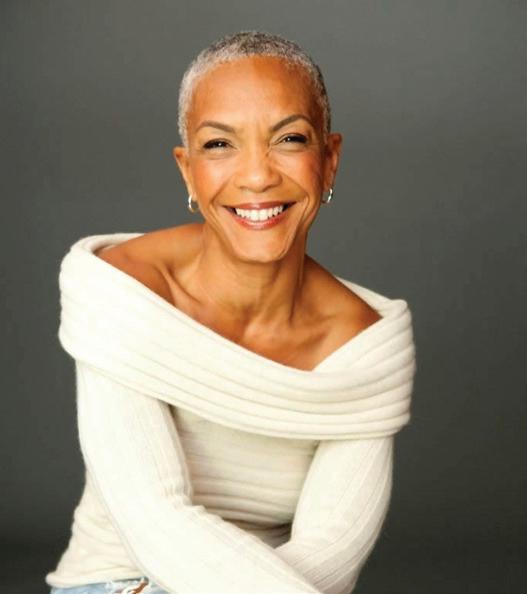
In 2008, I received news no one ever wants to hear. I was diagnosed with Stage I breast cancer, with an ER/PR positive tumor type.
The road to recovery was tough, taking more than a physical toll on my body. I grappled with the emotional and mental strain of navigating a health care system that too often fails to address the unique needs of Black women. There was no manual to guide me through this journey, no prescription to ease the burden, and no roadmap to help me navigate the challenges ahead.
The stark reality that Black women are 41% more likely to die from breast cancer than White women is a grim reminder of the systemic inequities that pervade our health care system.
According to the American
Cancer Society, Black Americans have the highest death rate and shortest survival rate of any racial or ethnic group in the country. This disparity extends beyond breast cancer, impacting colorectal, prostate, and lung cancers, among others.
To help overcome these inequities, we need to attack cancer at its roots; we must catch it early, and we must ensure the means to catch cancer early are accessible to the communities most at risk. I consider myself fortunate to have received a Stage 1 diagnosis. Yet, it pains me to know that for many others, their breast cancer is often detected in later, more advanced stages. It is a sobering reality – one that underscores the need for action. Fortunately, there is hope on the horizon. Some California congressmembers -- particularly U.S. Rep. Raul Ruiz (D-CA-25) -- are taking decisive action. Ruiz is a lead sponsor of a bill to dramatically expand access to cutting-edge early detection tools for Medicare beneficiaries, including millions of Black Americans in underserved communities. With bipartisan support from a strong majority of his colleagues in Congress, as well as many of our state’s representatives, this bill is closer than ever to passage.
Named in honor of Nancy
a civil rights leader and passionate advocate
for health justice, the Nancy Gardner Sewell Medicare Multi-Cancer Early Detection Screening Coverage Act would ensure Medicare has the latitude it needs to cover an exciting new class of cancer detection tests as soon as they’re cleared by the FDA.
These tests utilize the latest scientific achievements to identify cancer signals in a patient’s blood stream. They can pinpoint many different types of cancer from a single blood draw, dramatically improving doctors’ ability to detect cancers early and at stages where they are most treatable.
The importance of early detection in improving cancer outcomes cannot be understated, especially for African Americans, who often face later-stage diagnoses and poorer prognoses.
A recent study estimates that preventive cancer screenings in the past 25 years have given Americans at least 12 million more years of life, translating to a remarkable $6.5 trillion saved in health care costs. Too many cases are diagnosed after the cancer has spread and treatments, no matter how advanced, are less effective. And even for those forms of the disease, like breast cancer, for which there are screenings, patients can remain asymptomatic until the cancer has metastasized. That’s why MCED tests are
Commentary: Support Early Detection Technology to Save the Lives of Black Cancer Patients... continued
opinion. We’ve got the power to take control of our health. Together, we can rewrite the narrative of health care, catch and treat cancer early, and ensure that every woman has the opportunity to thrive, regardless of her race or background.
About the Author
Rhonda Smith, Executive Director of the California Black Health Network, leads initiatives to advance health equity for Black Californians, leveraging
her expertise from roles including consulting and spearheading health disparities initiatives for BIPOC communities. With an MBA from the University of Virginia's Darden School of Business and a B.S. in Civil Engineering from Virginia Tech, Rhonda has led transformative projects like the LiveHealthy OC Initiative and the Susan G. Komen® Circle of Promise California Initiative to address health disparities and promote whole person care approaches.
Salvation Army Week Spotlights the San Bernardino Hospitality House
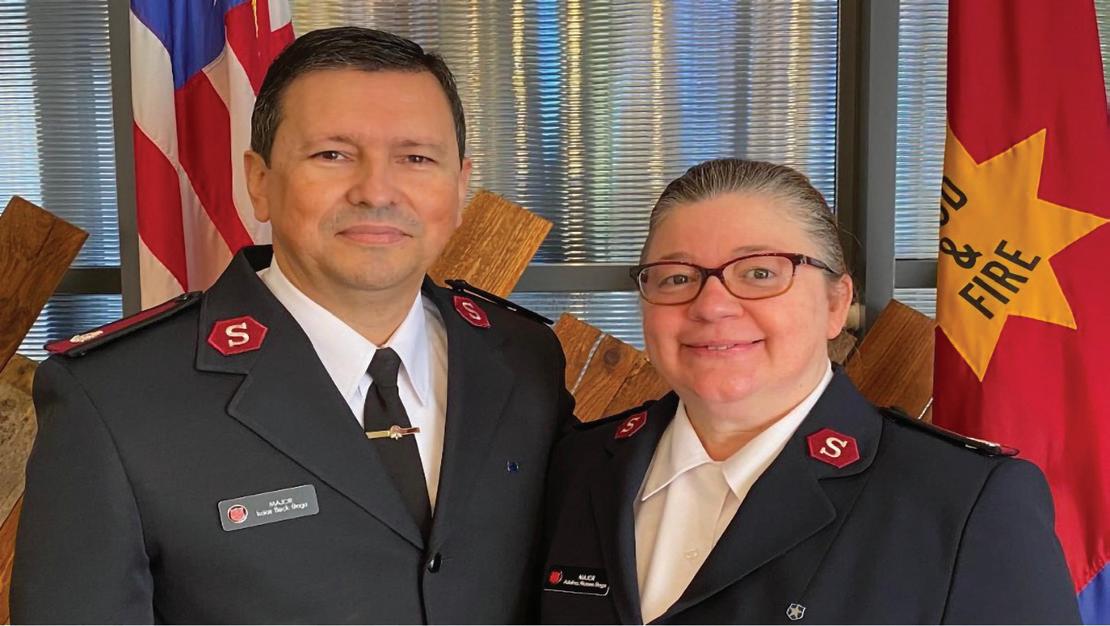
REDLANDS, CA. — National Salvation Army Week runs May 13 to 19, and the San Bernardino Corps invites people to its Hospitality House Open House on May 16 from 11:30 a.m. to 1:30 p.m. and 5:15 to 6:30 p.m.
“Hospitality House is a 95bed facility that provides shelter, education and employment assistance, legal advocacy, and other services to a variety of participants—single women, families with children, families,” says Program Director Naomi Goforth.
Of all people experiencing homelessness in San Bernardino County, 40% live in the City of San Bernardino.
The Salvation Army’s Hospitality House Program has responded to the growing need for shelter for the unhoused.
Seventy-five percent of people experiencing homelessness are people who were living within the City of San Bernardino before they lost their homes but no longer have a secure place to call home.
Goforth says that Hospitality House gets referrals from 211
such a game changer, especially when it comes to cancers we currently can’t detect.
Any health care provider that can draw blood already has the tools to administer an MCED test. One of the largest obstacles to the widespread adoption of these tests isn’t technical – it’s the fact that Medicare has no pathway to cover new cancer screenings like MCED in a timely manner, even though people over the age of 65 are at the greatest risk of developing cancer. Without the possibility of Medicare coverage, MCED tests won’t be available for the underserved and older adults who would benefit the most.
The next phase of our fight against cancer – and the disproportionate toll it takes on Black Americans – starts by urging Congress to pass the Nancy Gardner Sewell Medicare Multi-Cancer Early Detection Screening Coverage Act and ensuring the benefits of this legislation reach all corners of our communities. I don’t advocate for change for myself, but for every Black woman who has faced, or will face, a similar battle. Please heed my words – for yourself and your health. Ask for the necessary tests or screenings. If you’re unsatisfied with their response, don’t hesitate to seek a second
(the County’s services referral line), hospitals, local schools, and city and county social services agencies. She pointed out that the program gets local County and City funding to support shelter operations and depends on donations to provide its services.
“We would love to have people come to our Open House,” says Goforth. “You can have a tangible picture of how people’s lives can change for the better, tour our facilities, and learn about the various services we provide that make our program so much more than just a short-term stay with a bed to sleep in.” Hospitality House success stories are plentiful. While the program gets some funding from city and county sources, individual and company donations are still needed to make ends meet. Donate online at SanBernardino.SalvationArmy. org or by calling 1-(800)-SALARMY, specifying that you want your donation applied to San Bernardino Corps in California. For more information, call (909) 792-6868.
Improving Child Welfare to Help Kids Heal and Thrive in Early Education Years
By Fatima Killebrew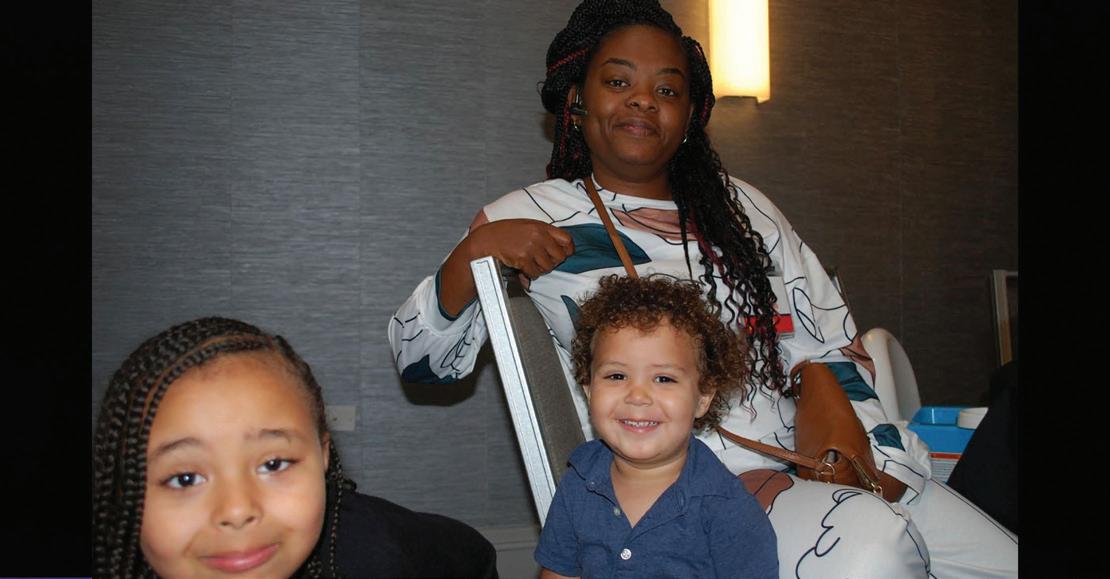
As I recently walked the grounds of the U.S. Capitol, each step carried the weight of purpose and possibility. I was nervous about meeting with members of Congress, who hold the power to act on issues that affect my family and many others. I worried: What if I stumbled over my words? What if I failed to convey the sense of urgency and the depth of my passion for family reunification? But as I walked to my first
meeting, those doubts faded. Nerves were overpowered by determination as I remembered my mission — advocating for babies and toddlers, who don’t have a voice in the child welfare system. I focused on my message: We must ensure they have the nurturing relationships, stable homes, and access to mental health services they need to thrive socially, emotionally, mentally,

First 5 San Bernardino Celebrates 25 Years of Serving Young Children and Families in San Bernardino County
First 5 San Bernardino celebrates major milestone of championing for the growth and development of children prenatal through 5 years old
City/World News
SAN BERNARDINO, CA
(May 13, 2024) – First 5 San Bernardino is celebrating 25 years of prioritizing young children’s early development in San Bernardino County. The organization strengthens families with children prenatal through 5 years old through three strategic priority areas – child health, quality early learning and family support.
First 5 San Bernardino was founded in 1998 and funded by Proposition 10 – The California Children and Families Act –through excise taxes on cigarettes and tobacco products. The revenue from this tax supports the various programs supported through the organization.
“What began from an effort to reduce the harmful effects of tobacco has evolved into a collective impact where tens of thousands of children, parents and caregivers have been served through our programs, services and partnerships,” said Executive Director Karen Scott, First 5 San Bernardino. “We have worked hard to build meaningful partnerships with organizations in our county who share in our mission to improve the lives of our children and their families.”
Over the past 25 years, First 5 San Bernardino has built sustaining collaborations with dozens of partner agencies, nonprofits and community stakeholders to help thousands of families. Engagement with programs such as Quality Start, Help Me Grow, Maternal Health Network, Smile SBC, Footsteps2Brilliance and more, ensure that all children in San Bernardino County are healthy, safe, nurtured and prepared to thrive.
Two Inland Empire programs that First 5 San Bernardino has served as a critical partner are Reach Out and Read and Help Me Grow. Marti Baum, MD, pediatrician and medical director of Community Health at Loma Linda University Health, has served as a physician champion for both programs.
“We congratulate First 5 San Bernardino for 25 years of exceptional work on behalf of children in our community,” said Dr. Baum. “Our region
is making significant progress in collaborating on early intervention and prevention goals, so all children are kindergarten-ready by age 5.
Thanks to First 5 San Bernardino, we have distributed over 100,000 books to children during well child visits across 30 pediatric clinics.
“Help Me Grow Inland Empire has screened over 15,000 children since its inception in 2021 and together with First 5 San Bernardino, has created a future where even more children will be screened for developmental and social risks to identify the need for early intervention services,” concluded Dr. Baum.
First 5 San Bernardino’s three priority areas are supported by annual campaigns that launch at different times throughout the year. In the winter, the organization executes an oral health campaign called “Little Teeth, Big Responsibility” that emphasizes the importance of pediatric oral health. Summer focuses on child safety in the hot months through its “Kid Safe Summer” campaign, and “Gift a Kid a Book” happens each fall encouraging early reading to build developmental learning skills.
In its 25th year, the organization has a dedicated logo that will be used throughout 2024 to celebrate the milestone. Other efforts include updated branding, new partnerships and innovative marketing and social media efforts.
The organization continues to grow in its community outreach efforts to meet the needs of families across the large footprint of San Bernardino County, the largest county by geography in the contiguous United States. First 5 San Bernardino continues to collaborate with partners at community events throughout the year to provide resources and information to families. This includes everything from providing free school supplies and books, to water safety materials and promoting special programs.
Sneak Peek at Summer: Free Health Screenings at Walmart Wellness Day...continued
whooping cough (TDAP), Hepatitis A & B and more
· Wellness resources and the opportunity to talk with pharmacists
“Our pharmacies are pillars in the communities they serve, and Wellness Day creates wonderful opportunities to deepen those connections while also offering impactful services such as free screenings and affordable immunizations,” said Kevin Host, Walmart’s Senior Vice President of Pharmacy. “We’ll
continue to build and execute through our pharmacies and Vision Centers to ensure we’re doing what we can to help people save money, live better and live healthier this summer.”
Since 2014, Walmart pharmacies have hosted Walmart Wellness Days, contributing more than 5 million free health screenings for customers. More than 4,000 Walmart stores are in medical professional shortage areas, which means Walmart is often the first stop for health care in these communities.
Improving Child Welfare to Help Kids Heal and Thrive in Early Education Years...continued from page 4
physically, and academically as they grow and develop. I was at the Capitol with families from all 50 states and Washington, D.C., as part of the annual Strolling Thunder™ event, an initiative of ZERO TO THREE to create a national movement urging policymakers to prioritize the needs of infants, toddlers, and their families. We met with lawmakers to discuss investing in childcare; expanding Early Head Start; investing in infant and early childhood mental health; establishing a national permanent paid family and medical leave program; permanently reinstating the enhanced, fully refundable child tax credit; and my focus, improving the child welfare system.
We urged them to enact legislation that supports good health, strong families, and positive early learning experiences. As a foster and adoptive parent, I know that when babies and toddlers are separated from their families, they carry that trauma into their early education years and beyond. That is why I am particularly concerned that early childhood educators are equipped with information and training about infant and early childhood mental health, so they are better able to support all children — and particularly my children — in early learning settings. Strolling Thunder was an opportunity for ordinary people like me to advocate for extraordinary, longoverdue change. I learned about it through the Memphis Parent
For more information on First 5 San Bernardino, visit First5SanBernardino.org. legislation.
Sneak Peek at Summer: Free Health Screenings at Walmart Wellness Day
Free screenings, affordable immunizations at Walmart pharmacies nationwide on May 18
BENTONVILLE, Ark. –Vacations, camps and summer get-togethers are on the horizon, and Walmart wants to help make your health a priority for them all. Join Walmart for Wellness Day on Saturday, May 18, from 10 a.m. - 2 p.m. where customers can receive free health screenings for things like glucose, cholesterol, BMI and blood pressure, as well as affordable immunizations like COVID-19, shingles, tetanus, measles and others at pharmacies nationwide. Customers will also find a broad assortment of product offerings ranging from allergy relief options to vitamins and more. Walmart Wellness Day encourages families to check in on their health by providing tools and resources to seek care, improve healthy lifestyles and maintain successful habits. Nearly 4,600 Walmart pharmacies across the country will host Walmart Wellness
Day events from 10 a.m. - 2 p.m. local time on Saturday, May 18. Select stores will feature vision screenings, instore giveaways and demos of wellness products to make it even easier for customers to access the specialized services they need.
Walmart Wellness Day events feature the following health resources, administered by qualified pharmacy and Vision Center teams:
· Free health screenings, including glucose, cholesterol, blood pressure, body mass index and vision screenings (select locations)
· Affordable immunizations, including COVID, measles, mumps, pneumonia, tetanus, HPV, rubella (MMR), varicella (chicken pox/shingles),
Leadership Training Institute, which provided 20 weeks of classes that taught me about community advocacy — and helped me find my calling in advocating for siblings in foster care.
Fatima Killebrew and her family visited the office of Tennessee Sen. Marsha Blackburn as part of a national movement urging policymakers to prioritize the needs of infants, toddlers, and their families.
Fatima Killebrew and her family visited the office of Tennessee Sen. Marsha Blackburn as part of a national movement urging policymakers to prioritize the needs of infants, toddlers, and their families.
The Capitol Hill meetings were a testament to the potential for change through dialogue and affirmed the power of personal connection. Each interaction felt like a step toward progress, from talking with staff members for Tennessee Senators Marsha Blackburn and Bill Hagerty to meeting with Rep. Steve Cohen of Memphis and his team. I felt especially seen and heard during a meeting with U.S. Department of Health and Human Services staffers. As we shared personal stories to make the case for mental health services and child welfare system improvements, the staffers’ expressions conveyed genuine concern for families like mine. As a wife, mother, social worker, and foster care advocate in Memphis, Tennessee, I have
continued on page 7
Padilla, Durbin, Gillibrand Lead Call to Provide At Least $3 Billion for Shelter and Services Program in FY 25...continued from page 3
Full text of the letter is available here and below:
Dear Chair Murray, Vice Chair Collins, Chair Murphy, and Ranking Member Britt:
As you develop the FY 2025 Homeland Security Appropriations bill, we urge you to provide not less than $3 billion for the Federal Emergency Management Agency’s (FEMA) Shelter and Services Program (SSP) for humanitarian assistance funding, which supports state, local, and nonprofit service providers who are assisting the federal government with providing critical services for asylum seekers. We also ask that you include language directing the Department to ensure that funding for the SSP program is not limited to entities that previously applied for either SSP funding or funding under its predecessor, the FEMA Emergency Food and Shelter-Humanitarian (EFSP-H) Program. Third, we ask that you include report language directing FEMA to publicly release its allocation methodology and to work closely with SSP recipients to ensure that funding for the program is received in a timely manner.

In light of federal capacity constraints, the federal government relies on local nonprofit and governmental social service organizations, as well as states and localities, to provide shelter, food, transportation, and support services to asylum seekers arriving at our southern border. Communities and organizations are on the frontlines of assisting migrants, and resources are being stretched thin as these entities perform federal government functions. This funding remains vitally important as more cities in the United States receive asylum seekers and other vulnerable migrants.
Given that the federal government has asked states, localities, and nonprofits to perform an essential governmental function, Congress must reaffirm its commitment to these states, localities, and nonprofits by providing significant funding for SSP and by working to ensure that funds are allocated and disbursed to recipients in a transparent and timely manner. Thank you for your consideration of this request, and we look forward to engaging with you to reaffirm this commitment.
Sincerely,
“LivingBy Lou K. Coleman
Thursday, May 16, 2024
INLAND EMPIRE/HIGH DESERT/ ENTERTAINMENT/RELIGION NEWS
in Uncertain Times!”

War, Drought, Starvation, Terrorist threats, Uncertain and knowing that the day of the Lord will come as a thief in the night, in which the heavens will pass away with a great noise, and the elements will melt with fervent heat; tell me what manner of persons ought you to be? [2 Peter 3:11]. Jesus is coming back with a vengeance, handing out judgment to all those that are disobedient and refuse to accept Him as Lord and Savior, I ask you, what manner of person ought you to be?
Knowing that God is planning judgment should bring us all into a sobering reality. You cannot be preoccupied with the cares of this life and neglect the welfare of your soul. That is the tragedy that happened in the days of Noah.
UNDERSTAND - Salvation is a gift from God. It is the provision, the escape route that God has made for everybody to escape His judgment and wrath. Therefore, give the more earnest heed to the things which you have heard, lest at any time you should let them slip. For if the word spoken by angels was steadfast, and every transgression and disobedience received a just recompence of reward; How shall you escape, if you neglect so great salvation; which at first was spoken by the Lord and was confirmed unto us by them that heard him. [Hebrews 2:1-7].
Live a life of wisdom instead of foolishness, making the most of every opportunity, because the days are evil understanding what the Lord’s will is. We must recognize how short our time is. Moses says in [Psalm 90:12], “Teach us to number our days
aright, that we may gain a heart of wisdom. If we do not realize how short our time is, we will not make the most of it. Our time is short because death awaits us. It is short because certain opportunities currently before us will not always be there. If you haven’t given your life to God, do it right now, because the next second isn’t promised. Understand that life without God is “futile.” It is empty, worthless, unfulfilling. [Ecclesiastes 1:2] says, “Vanity of vanities, says the Preacher, vanity of vanities! All is vanity.”
I appeal to you therefore, by the mercies of God, to present your bodies as a living sacrifice, holy and acceptable to God. Do not be conformed to this world, but be transformed by the renewal of your mind, that by testing you may discern what is the will of God, what is good and acceptable and perfect. [Romans 12:1–2].
Oh, how I love you, Lord! You are my defender. My God is my protection, and with him I am safe. Praise the Lord! The danger of death was all around me; the waves of destruction rolled over me and the grave set its trap for me. In my trouble I called to the Lord. In his temple he heard my voice; he listened to my cry for help. Then the earth trembled and shook; the foundations of the mountains rocked and quivered, because God was angry. The Lord reached down from above and took hold of me; he pulled me out of the deep waters. He rescued me from my enemies, the Lord protected me. He helped me out of danger; he saved me. This God—how perfect are his deeds! How dependable his words! He is like a shield for all who seek his protection. God alone is our defense. The Lord lives! And so, I praise you among the nations; I sing praises to you. [Psalms 18].
Living in Uncertain Times with God on Your Side!
Church shootings force reckoning between faith and security
While violence in houses of worship isn’t new, attacks have more than doubled since 2022 — including an attempted shooting near Pittsburgh last weekend.
By Rev. Dorothy S. Boulwarein
The Rev. Glenn Germany, pastor of Jesus’ Dwelling Place Church in Pittsburgh, was halfway through his sermon last Sunday when a young man in jeans and a black T-shirt got up from one of the pews and walked to the altar.
Holding a silver handgun, he aimed at the preacher and pulled the trigger. Germany dove behind a wooden lectern, the only cover he could find.
That’s when the gun jammed. As a parishioner tackled the gunman, Germany ran over and wrestled the gun out of his grip and helped hold him until police arrived.
Unfolding on the church’s live webcast, the incident was shocking, but not uncommon.
This year alone, armed intruders have opened fire inside several houses of worship, including the Texas megachurch of celebrity pastor Joel Osteen. There, security officers shot and killed a woman who shot and wounded several people, including an 11-year-old boy.
Studies show the number of shootings in houses of worship — fueled by political dissent, personal conflicts, non-specific mental health outbursts and even the overflow of domestic disputes — have more than doubled from 2022 to 2023. And threats against both Jewish and Muslim worship communities have spiked since the Israel-Hamas war began. The worrisome trend has prompted the federal government to set aside more than $400
Church shootings force reckoning between faith and security...continued
worshippers attending Bible study in Mother Emanuel AME Church in Charleston, South Carolina. Three years later, an assailant gunned down 11 people at Tree of Life Synagogue in Pittsburgh, the deadliest mass shooting at a place of worship in U.S. history.
Still, the violence has become more common in the era of mass shootings and widely available handguns. Some 430 incidents occurred in 2023, more than double those in 2022 and eight times those of 2018, according to a Family Research Council Report.
Trusty, the security company owner, says providing security for a house of worship typically calls for discretion, among the key traits he looks for in prospective employees.
“We always screen individuals to ensure they understand the sensitivity of the assignment. We don’t just find a random security office and send them,” Trusty says. “We want to ensure that they are sensitive to the needs of the house.”
Besides providing security, Trusty says he also provides
training to help churches enhance their own security.
“We have encountered individuals who have had lifethreatening situations occur to them” who have come for training “to help deal with the trauma,” he says. “But they were able to overcome their issues. So while we do provide training for people to get certified for firearms, tasers, etc., our training also can serve as a form of therapy.”
Janice Lee, owner of Afterhourz Security Consulting and Protection Services, counts churches among her government and business clients. She even attends services herself.
When her agency was smaller she had to personally guard the pastor. But it’s grown large enough that she can enjoy worship, knowing her agents are in place. Most churches need someone to guard the offering time and space and someone for the pastor, “unless there’s a particular threat,” Lee says.
This article was reprinted with permission from WordinBlack. com.
Improving Child Welfare to Help Kids Heal and Thrive in Early Education Years...continued from page 6
experienced the complexities and challenges families face. My own blended family of nine has navigated foster care, striving to keep siblings together and connected with their families.
Children under age 3 enter the child welfare system at higher rates than any other age demographic; and in my home state, Black children are removed from their homes more often than children in any other racial group.

million to help churches protect themselves with extra security equipment, with an application deadline of May 21. But there has also been an emergence of private companies that are specializing in providing security to churches.
Donell Trusty, owner of Trusty Training Solutions, has provided security to churches since launching his company in 2021. He says he trains his agents to assess the situation, then handle it swiftly and calmly.
“We have encountered individuals with mental issues who have come into the place of worship and caused disturbances,” Trusty says.
“In these instances we have to understand the condition of the person and be able to navigate in a manner that will not disrupt the service or drive people away from future worship opportunities.”
Violence against communities of faith in houses of worship is not new.
The Sept. 15, 1963 bombing at the 16th Street Baptist Church in Birmingham, Alabama — an attack that killed four little girls — is etched in civil rights history. In June 2015, a gunman hoping to stoke a race war killed nine
In my family’s foster care experience, I have seen my daughter Remy’s joy in knowing she has a baby brother, and her disappointment at hearing he can’t come home. Remy was initially separated from her parents and siblings. I made it a mission to reunite her with her biological siblings, Amir and Khai. Despite obstacles due to outdated policies and understaffing, we reunited Remy and Amir, thanks to the support of their biological family. But our journey continues to reunite all three siblings. We won’t stop pushing so they can heal together and be with relatives who share their values, culture, and medical
history. And in the meantime, my children need support from an early care system that responds to their social and emotional needs.
In D.C., I called on legislators to support the Strengthening America’s Families Act. We must prioritize reunification, invest in preventive measures, and provide comprehensive mental health support to children and families. My family is proof there are alternatives. We shouldn’t have to fight so hard to keep siblings together.
As I left Capitol Hill with my son Amir, I felt hopeful that Congress could enact meaningful changes. Our collective voice can pave the way for a more compassionate and effective child welfare system that prioritizes child well-being and reunification, as well as a childcare system that centers on social and emotional development. As I see my children interact, I know that keeping these siblings together will only strengthen their potential to thrive throughout their early education years and beyond.
Peace is Possible...continued
to peace, let alone declare with simple confidence that peace is in fact possible.
But then last week, I gathered with other church leaders from around the globe at a World Council of Churches (WCC) event outside Geneva, Switzerland. I listened as Rev. Dr. Jerry Pillay, the General Secretary of WCC, shared that the WCC is increasingly being invited – in some cases even by governments - to sit at tables where peace is being brokered and to meet with heads of state to discuss the prospects for peace.
In Columbia, in Palestine and Israel, in Russia and Ukraine, in Sudan and a variety of other places, peacebuilding has suddenly become a central task for the Council.
It was enough to make me think that perhaps peace really is possible. And it offered a powerful reminder of what I’ve always actually believed: the Church has a valuable and faithful role to play in peacemaking. I now have the amazing privilege of seeing on a daily basis the ways we in the United Church of Christ are actively pursuing peace in this country and alongside partners across the world.
I marvel at the perseverance of so many of our Global Ministries partners in places where wars and conflicts rage and am inspired by their unwavering witness for a just peace despite so many obstacles and endless setbacks.
I celebrate the willingness of United Church of Christ members to pray, advocate, protest, and write letters to Congress all for the cause of peace. I give thanks to our National Ministries staff who accompany distressed global partners with such dedication and compassion, and others who
invite and equip our advocacy. I’m grateful for our ecumenical and interfaith partnerships that multiply our impact and amplify our voices. It’s inspiring to see the Church at work in the world in all these ways, carrying a vision for the world where all have abundance, and none live in fear. Blessed are the peacemakers, indeed! Some days it’s still hard to proclaim with conviction that peace is possible. When the enormity of the world’s troubles weighs heavily on my heart, and the inability of nations to forge a path to peace overwhelms me, I empathize with the Jesus who wept over Jerusalem. As he looked out over that city in the last days of his ministry, he said, “If you, even you, had only recognized the things that make for peace!” (Luke 19:42) But then my faith enters in. And I remember that the work the Church is called to requires that we look beyond the heartaches of now and actively imagine the endless possibilities that God can wrestle from even the deepest sorrows and most tangled messes. The UCC’s Just Peace pronouncement in 1985 said it exactly right: Just Peace is grounded in hope. Shalom is the vision that pulls all creation toward a time when weapons are swept off the earth and all creatures lie down together without fear; where all have their own fig tree and dwell secure from want. As Christians, we offer this conviction to the world:
Peace is possible.
(Pronouncement on affirming the United Church Of Christ as a Just Peace Church, the Fifteenth General Synod, 1985)
‘Take Me to the Water’ is not being sung in Flint churches...continued from page 1 still in touch,” Quarles says. Nowadays, the church is still “blessed to have partners, so we have water boxes that hold and filter water before it’s given out in 2- or 5-gallon containers,” he says, which they do every Wednesday and Thursday.
Some churches joined in the distribution of bottled water to poorer residents, and churches served as repositories of important information and updates. They also helped bring people together, forging resiliency in a time of crisis. But not much thought was given to how it changed the ritual of baptism.
Redefining baptism
Peace is Possible
Shari PrestemonNearly 40 years ago, the United Church of Christ passed a pronouncement at our Fifteenth General Synod in 1985 declaring ourselves a “just peace church’. Threaded through the pronouncement’s language were three bold words: “Peace is possible.”
That was a fairly audacious statement considering what was happening in 1985. Famine in Ethiopia had taken nearly a million lives. Cold War tensions were intense, and the Communist Bloc was still intact. The threat of nuclear war was depressingly real. A “just peace” seemed more
a very distant dream than a live possibility. There are days when peace feels pretty remote to me now, too. The news offers a constant barrage of the brutality of war and bitter conflicts across the globe. In places like Gaza, Ukraine, Sudan, and Haiti the scale of death, devastation, trauma, and civil unrest is gutwrenching. The geo-politics and histories involved in each of those spaces are a complex web that feels impossible to sort out. It’s hard to imagine a pathway
Flint-area pastors collectively reflected on and developed principles around baptism in the city. In a 2022 paper published in “Sacramental and Liturgical Theology of Healing and Crisis Rites,” the pastors wrote that “Baptismal faith and identity were expressed in networks of solidarity that both facilitated church parking lots piled high with pallets of water and sustained those who sat around countless tables in tense rooms demanding accountability and justice.”
They “found themselves examining their own understanding of baptism — what it is, what it means — during a time when the water was a sign of dehumanization and environmental racism.”
As a result, “The call to pastoral care rapidly expanded outward as folks recognized a need to act beyond the church walls,” according to the paper.
Significance of baptism
Most churches celebrate new membership with some form of baptism, christening, or drizzling. For Baptists, full immersion is the most often employed method — dipping the
new member’s entire body into a water-filled tank, or a nearby body of water. But if the water is not clean enough, most pastors look for alternatives. While salvation is not dependent upon baptism — baptism is an outward sign of an inward transformation — it is quite important in the life of the church and of the family. Fully immersing a candidate in water symbolizes a formerly sinful person’s metaphorical death and resurrection into a new life in faith.
Faith-based calls for accountability
Despite an ongoing, massive overhaul of the city’s water system, Flint’s faith community is still not sure their water is safe enough for baptism, one of the church’s most sacred rituals.
Aldridge, of Second Chance Church, says baptism “was a big deal, like a bar mitzvah.” Families would gather to celebrate the event, with meals and fellowship with the congregation. Since the water crisis emerged, Aldridge says, baptism “has lost momentum and is now disconnected from the church’s purpose.”
Fortunately for Aldrige, his church building gets water from a different source. But he is frustrated that, a decade after the first cup of dirty water was drawn from the Flint River, no one has been held to account for the problem.
“Someone needs to take responsibility,” he says “Someone needs to be held accountable. The people of Flint need to be made whole again.” This article was originally published by Word in Black. This story is part of “Flint’s Still Fighting,” Word In Black’s series about the decade-long water crisis, and the struggles and triumphs still transforming the majority-Black city.
Experts weigh in on mounting concerns of impending U.S. civil war
By Stacy M. Brown NNPA Newswire Senior National Correspondent
In the wake of a recent survey revealing startling apprehensions among American voters regarding the possibility of a second civil war, experts in history and political science offer sobering insights into the nation’s current trajectory.
Ashley Robertson Preston, an assistant professor of history at Howard University and author of the acclaimed book “Mary McLeod Bethune the Pan-Africanist,” has detected a palpable shift in national sentiment.
When taking the pulse of America, Preston said she can’t help but to conclude that all hell is about to break loose. She emphasized the eerie parallels between contemporary tensions and the lead-up to the Civil War.
“The tension that this nation is currently experiencing is very similar to what happened shortly before the Civil War,” Preston said. “As much as I want to say it can never happen again, history says something else. We will all just have to remain vigilant. History matters more than ever now.”
Michael Kazin, a renowned expert on American politics and social movements and a professor in the Department of History at Georgetown University, echoes Preston’s sentiments. While
acknowledging the prevalence of domestic strife over issues such as the Gaza conflict, the prosecution of Donald Trump and contentious debates over issues such as abortion, race and LGBTQ-plus rights, Kazin refrains from predicting an imminent civil war.
“We are embroiled in various kinds of civil conflict now I think we are a long way from that,” Kazin observed, highlighting the distinction between current societal divisions and the magnitude of a full-fledged civil war.
“A civil war would be quite different. It would involve widespread armed confrontations, probably involving some elements of the U.S. military,” he added. “As long as elections, the courts, and Congress operate fairly normally, there can be no civil war.”
These expert assessments follow a Rasmussen Reports poll revealing that a troubling number of U.S. voters harbor concerns about the likelihood of a civil conflict erupting within the next five years. The Rasmussen Reports poll shows that 41 percent of respondents foresee a civil conflict, compared to 49 percent believing it is not likely and 10 percent unsure. The alarming figure translates
to approximately 106 million American adults anticipating a potential civil war scenario.
The survey findings coincide with escalating tensions on college campuses, where clashes between pro-Palestine demonstrators, law enforcement, conservative groups and certain Jewish students have become increasingly common.
Additionally, the popularity of the dystopian political action film “Civil War” by Alex Garland has fueled speculation about America’s susceptibility to violent upheaval.
Rasmussen analysts have emphasized the looming specter of civil war, particularly amidst the divisive political landscape of an upcoming election year, which pits President Joe Biden against his predecessor Donald Trump. The historical parallels drawn to the devastating conflict of 1861–1865, where 11 southern states seceded from the Union over the issue of slavery, further exacerbate concerns among voters.
“The possibility that America could face another civil war soon is not too far-fetched for a lot of voters,” remarked the pollsters regarding their findings, noting a significant correlation between demographic groups
and their levels of apprehension. Specifically, women, younger adults, and non-White Americans exhibited higher levels of concern regarding the potential outbreak of conflict. Furthermore, political affiliations played a notable role, with Republican voters expressing greater certainty in the likelihood of civil war compared to their Democratic counterparts.
The survey also probed respondents’ perceptions regarding the influence of the presidential election outcome on the probability of a civil conflict. Results indicated that 37 percent believed a Biden victory would increase the likelihood of war, while 25 percent held the same view in the event of a Trump triumph. A significant portion, comprising 30 percent of respondents, asserted that the election outcome would bear little influence on the likelihood of conflict, while 8 percent remained uncertain.
With the polarization and unrest plaguing the nation, protests on college campuses have served as flashpoints for ideological clashes between conservatives and liberals.
Recent demonstrations opposing Israel’s actions in Gaza have elicited strong reactions, with conservative politicians denouncing protestors as radicals, Marxists, and anti-Semitic. These tensions underscore a widening fault line within American society.
Meanwhile, secessionist movements, particularly prominent in states like Texas, California and Alaska, perceive the current climate as a harbinger of the chaos depicted in the film “Civil War.” The movie portrays a fractured United States plunged into armed conflict, with factions vying for control amid governmental collapse and authoritarianism.
American Chamber of Commerce Holds Annual Gwen Moore Legislative Reception
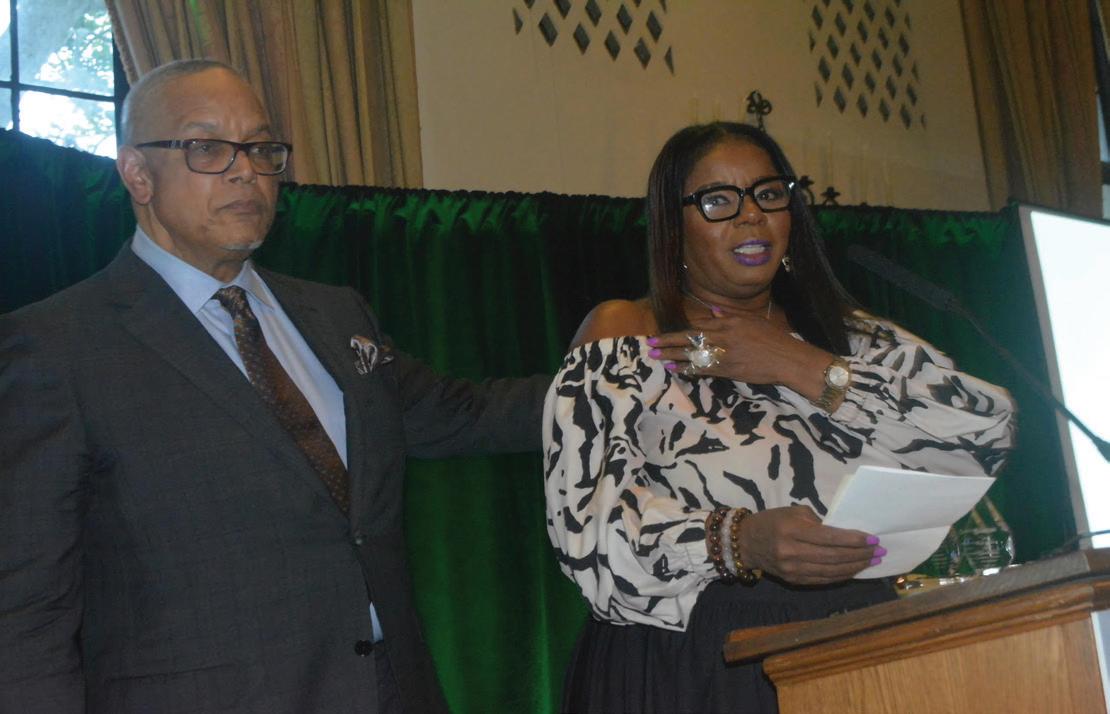

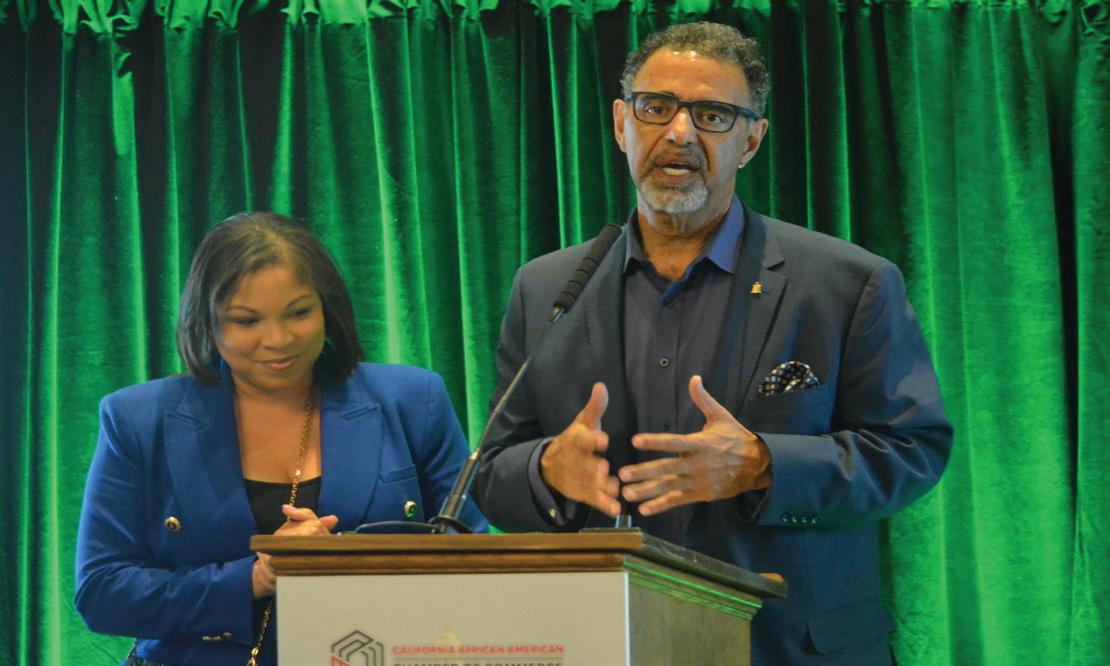

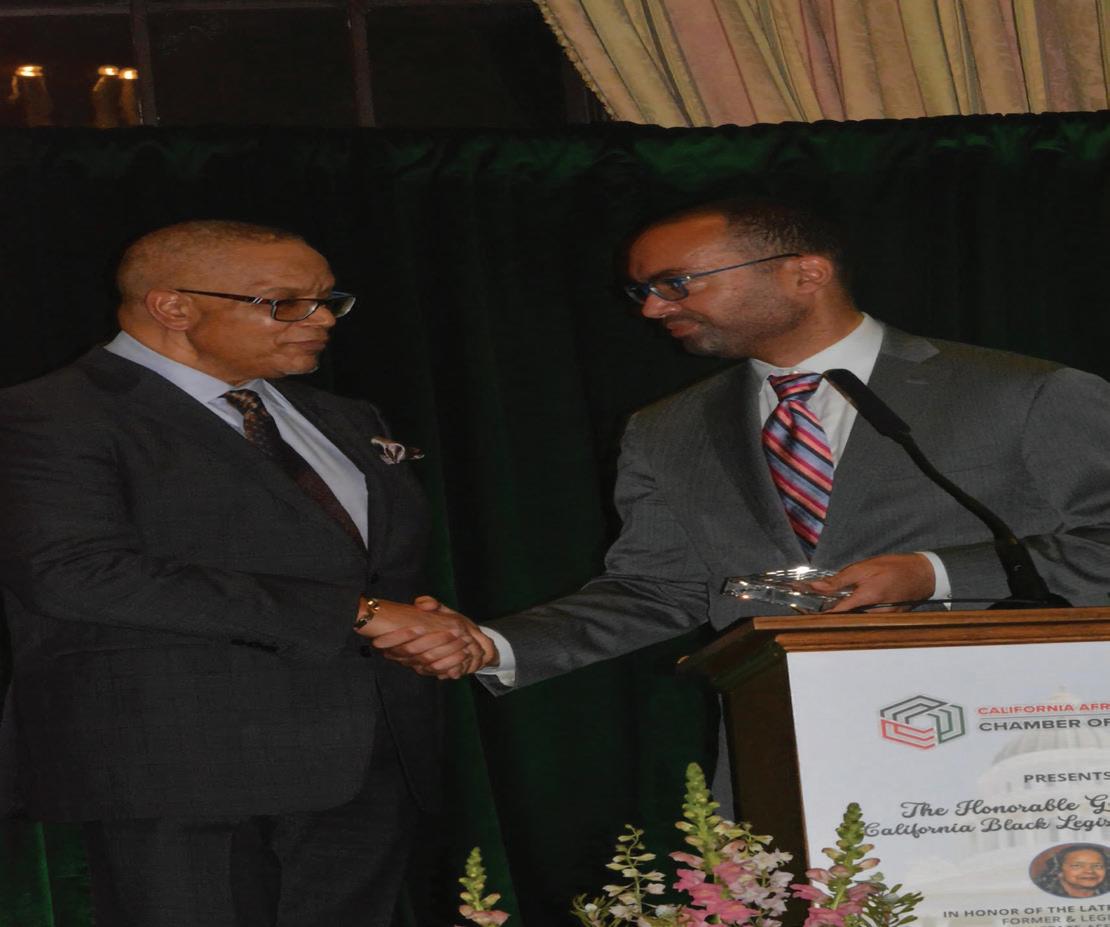
for their achievements, innovative ideas,
acumen, and political contributions.
The CAACC Media and Communications Award was presented to Civil Rights Activist Danny Bakewell Jr., President of the Bakewell Company and Executive Editor of the Los Angeles Sentinel.
The Gwen Moore Legislative Impact Award was presented to Assemblymember Lori Wilson (D-Suisun City), Chair of the CLBC. The Legislator of the Year honor went to Assemblymember Corey Jackson (D-Moreno Valley).
“This is an absolute honor. Especially, with my knowledge and familiarity with Assemblymember Moore’s work,” Wilson said. “It’s just a reminder, honor, and privilege of this space I get to be in. This award holds profound significance for me and those who dedicated their lives to advancing equity, justice, and opportunities for all.”
Cathy Adams, President and CEO of Oakland African American Chamber of Commerce was presented with the Aubry Stone Outstanding Business Award. The Trailblazer Award was presented to the late Linda Crayton, former San Francisco City Commissioner.
Crayton served on the Airport Commission for the City and County of San Francisco from 1996 to 2020.
“She clearly served for almost 25 years, and she was totally sensitive to the need and careful implementation within the framework of all the rules that had been established,” Brown said of Crayton. She was a difference for many.”
Other leaders honored were John Reynolds, California Public Utilities Commission (recipient of the Distinguished Service Award); Hon. Heather Hutt, Councilmember for the City of Los Angeles, representing Council District 10, (Distinguished Service in the African American Community Award); and Thurman White, Senior Advisor ESO Ventures (Distinguished Recognition Award).
Rounding out the special guests and awardees list
were Sen. Steven Bradford (D-Gardena), CLBC Vice Chair, Dennis Thurston, Supplier Diversity Program Manager for Southern California Edison; Angela Gibson-Shaw, President of Greater Los Angeles African American Chamber of Commerce; and Tommy Ross, Pinnacle Strategic Group. Toks Omishakin, Secretary of the California State Transportation Agency (CALSTA) also attended the two-hour event.
The California African American Chamber of Commerce is one of the state’s largest statewide Black Chamber organizations. Its mission is to drive economic opportunity and wealth creation for African American businesses and connect and harness the collective strength of our statewide network of member organizations to elevate fiscal health. Moore was elected and first served on the Los Angeles Community College District Board in 1975. She was first elected to the state legislature in 1978 and served for 16 years until 1994, representing California’s 49th district (redistricted and renumbered in 1990 as the 47th district), which currently includes Long Beach, Catalina Island, and parts of Los Angeles and Orange counties. When Brown was elected to be the Speaker of the Assembly, he appointed Moore the Chairperson of the Assembly Committee on Utilities and Commerce. The position held legislative jurisdiction over telecommunications, electricity, private water corporations, natural gas, and other issues related to exchanging goods and services between businesses.
Moore passed away in August 2020.
“Her job was done in such a way that when she left the halls of legislation in 1994 the public utility world reached out to get her guidance and judgment in the process of decisions that would be made,” Brown said. “That’s the nature of how we need to work in the world of politics and, how we need to exercise authority and privilege.”

